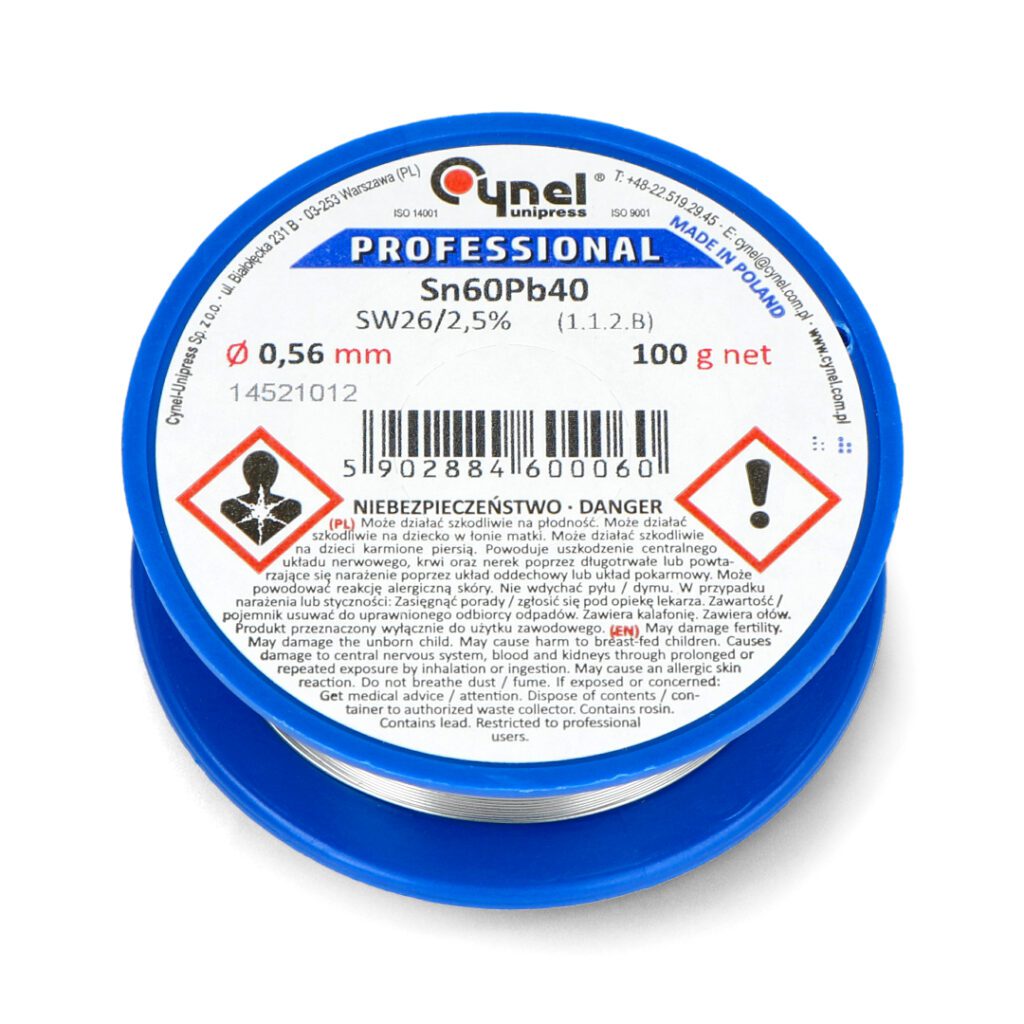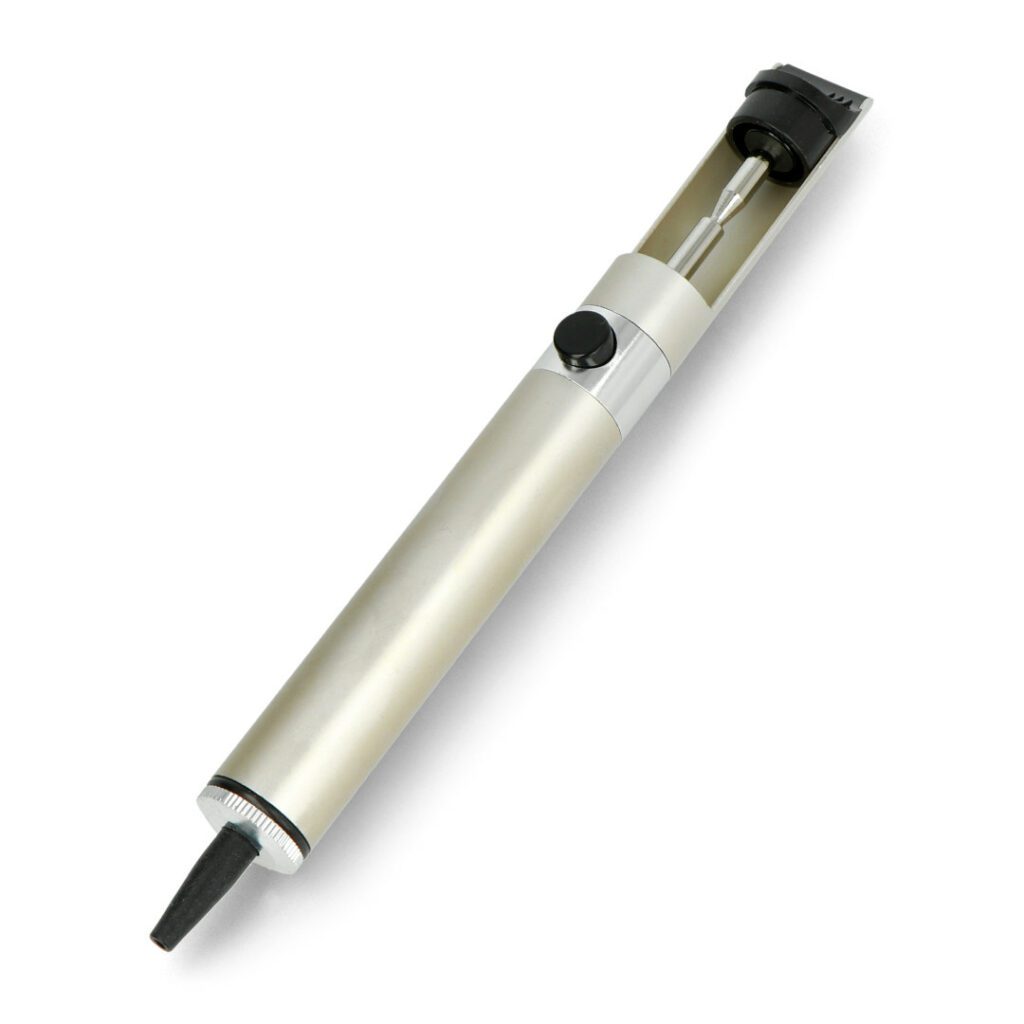Table of Contents:
Soldering is a process that requires not only the right soldering iron, but also a number of accessories that affect the efficiency and quality of the work.
Depending on the technique used – SMT or THT, different soldering accessories are used.
Choosing the right solder joint is crucial to maintaining the specific properties of the joint and the design requirements.
What other accessories are used during soldering and what is worth knowing about them?
Soldering technology
SMT (Surface-Mount Technology) soldering mostly requires the use of solder paste and gel flux.
In most cases, these should be applied under the soldered component before soldering.
THT (Through-Hole Technology) soldering, on the other hand, or so-called “through-hole” soldering.
through-hole assembly usually requires the use of traditional binders (including lead-free tin) and fluxes.
For small electronic components, tin with a diameter in the range of 0.25 mm to 1.00 mm is recommended.
Soldering binder - the most important accessory
When soldering, it is necessary to use the right consumables for the surfaces and components to be joined. Lead tin, the most popular soldering binder, consists of 60% tin, which acts as the actual binder, and 40% lead, a flux that facilitates soldering.
Thanks to its low melting point, the binder makes it possible to solder materials such as copper, ensuring high quality and durable connections.
In addition, the low melting point and ability to create solid, smooth and shiny connections are essential to avoid so-called “cold solders.
cold solders that can result in malfunctioning equipment.
Binders of other proportions and compositions are also available to suit specific requirements.
When choosing a tin, pay special attention to the diameter of the wire.
The smaller the dimension, the better the solder binder will perform in precision soldering of small electronic components.
Fluxes and rosin - an indispensable aid in soldering
When soldering , the importance of the flux often outweighs the role of the tin itself.
However, the quality of the tin is important, as a high-quality alloy directly affects the efficiency of the entire process.
However, the flux is also essential for its proper performance.
Even properly made solder, if overheated, loses its properties.
Such cases are especially common at high currents.
One of the most commonly used fluxes is active rosin.
This is a high-purity resin enriched with chemical compounds whose main task is to facilitate the soldering process.
When heated, rosin quickly sets.
When cooled, it becomes brittle (this can be observed on older circuit boards).
Gel fluxes, on the other hand, due to their consistency, retain their properties for a long time after being applied to the board.
They melt after direct contact with a hot soldering tip.
These properties make them ideal for precision work, including soldering SMD components.
They are available in a “no clean” version, which means that in theory they do not require cleaning of the boards after soldering.
Nevertheless, in practice, it is recommended to clean the boards thoroughly after the work is completed to ensure the best quality and durability of the soldered connections.
Necessary accessories to facilitate the soldering process
Choosing the right accessories for soldering is as important as choosing the soldering iron and binder itself.
They not only facilitate the soldering process, but also contribute to improving the quality of the connections made.
In addition, they ensure long-lasting and reliable operation of electronic devices.
What accessories are worth choosing?
- The use of a cleaner with a cartridge of brass shavings allows you to clean the soldering iron tip on an ongoing basis and prolong its life.
- Anti-static brushes for cleaning electronics are indispensable for devices sensitive to electrostatic discharge.
They ensure safety during service work. - On the other hand, extractors are extremely useful when assembly errors occur.
Their task is to effectively absorb excess solder.
In addition, they protect the soldering field from damage during desoldering. - Soldering fume absorbers are indispensable accessories for any person who is engaged in soldering.
Such devices work on the principle of an exhaust fan, effectively eliminating fumes that accumulate, for example, on the carbon filter.
Types of soldering tips
Soldering tips are responsible for transferring heat from the soldering iron to the area to be soldered.
Choosing the right soldering tip is crucial to the efficiency and precision of your work. Beveled conical arrowheads are popular among professionals and hobbyists.
Their shape allows easy access to tight spaces, making them ideal for precision soldering of small electronic components.
For soldering SMD components, mini-wave type soldering tips work best.
The specific shape allows you to effectively solder multiple pads at once, minimizing the risk of short-circuiting.
Other soldering accessories
Magnifying glasses and handles provide greater precision during soldering and desoldering.
Third-hand work grips are designed to hold PCBs firmly in place, ensuring that both hands can be manipulated freely.
What other accessories are useful for soldering?
Soldering mats, thanks to their ability to withstand high temperatures of up to 500℃ and their resistance to damage, are widely used by professionals and hobbyists.
Their design not only facilitates the organization of work, but also ensures safety.
Selected models are equipped with containers for safe storage of small electronic components.
The operation of ultrasonic washers is based on the phenomenon of cavitation (spontaneous and incremental increase in the volume of micro-bubbles of gases). This phenomenon is caused by ultrasonic waves of low frequency. Ultrasonic washers are used, among other things, in the thorough cleaning of printed circuit boards, or more precisely, solder residues.
Devices of this type are used, among others.
in electronic equipment service stations (e.g. GSM service stations).
How useful was this post?
Click on a star to rate it!
Average rating 5 / 5. Vote count: 1
No votes so far! Be the first to rate this post.





















